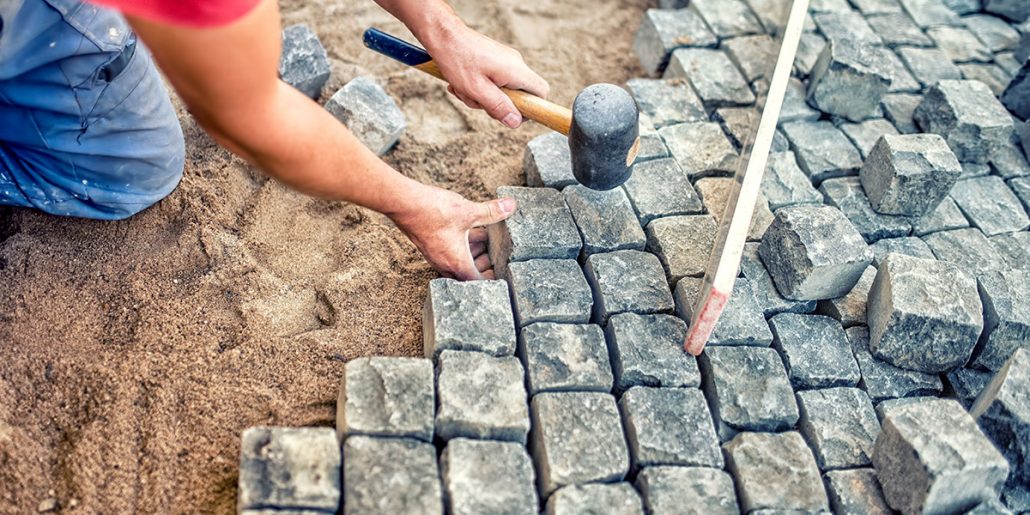Trustworthy Tuckpointing Services for Mending Brick and Rock Surfaces
Trustworthy Tuckpointing Services for Mending Brick and Rock Surfaces
Blog Article
Unlocking the Secrets of Sustainable Stonework Building Practices for Eco-Friendly Buildings
In the realm of modern building and construction, the search of sustainable practices has actually ended up being critical. Among the myriad strategies to environment-friendly building, lasting masonry construction attracts attention as a tried and true and durable approach that holds a riches of untapped possibility. From the option of materials to ingenious construction strategies, the tricks to accomplishing sustainability within stonework building are multifaceted and fascinating. By checking out the benefits, products, strategies, and future trends of lasting stonework, a much deeper understanding of exactly how these practices can form the future of environmentally friendly buildings arises.
Benefits of Lasting Stonework Building
Embracing sustainable stonework building methods not only lowers ecological effect but also supplies lasting economic benefits to builders and areas. By making use of materials like recycled bricks, obstructs, and rocks, home builders can substantially decrease the carbon impact of their projects while advertising resource efficiency. In addition, sustainable stonework building techniques, such as appropriate insulation and thermal mass buildings, can improve power effectiveness within buildings, causing reduced functional costs with time.
Furthermore, the resilience and strength of masonry frameworks contribute to lasting economic advantages. Buildings created making use of sustainable masonry techniques commonly need less upkeep and repair work, translating to cost savings for building contractors and homeowner. The long life of masonry materials additionally guarantees that frameworks remain steady and safe and secure, reducing the requirement for frequent improvements or replacements.
Eco-Friendly Stonework Materials
Using eco-friendly masonry products is a pivotal step towards boosting the sustainability of construction methods and decreasing environmental effect while making the most of long-term financial benefits. Lasting stonework materials are sourced, generated, and made use of in a way that minimizes overall environmental influence. Materials such as recycled bricks, reclaimed stone, and lasting concrete blocks are coming to be increasingly preferred selections for eco-conscious builders. Recycled bricks, as an example, not only divert waste from landfills yet additionally require less energy to generate compared to new bricks. Reclaimed stone uses an one-of-a-kind visual allure while lowering the demand for brand-new quarrying. Lasting concrete obstructs integrate recycled accumulations and might include enhanced insulation properties, adding to power effectiveness in buildings.
Additionally, natural products like adobe, rammed earth, and straw bales provide superb thermal mass buildings, lowering the demand for home heating and cooling energy. These materials are usually in your area offered, advertising regional economic situations and minimizing transportation-related carbon emissions. By choosing environmentally friendly stonework materials, building and construction jobs can considerably lower their environmental impact and add to the production of healthier, a lot more lasting developed environments.
Energy-Efficient Masonry Strategies
Energy effectiveness plays a critical duty in boosting the sustainability of stonework building and construction techniques. One vital energy-efficient stonework strategy is the usage of thermal mass, which includes integrating dense materials like concrete or brick into the building's framework to soak up and save warmth.

Developments in Lasting Masonry
Current improvements in sustainable masonry techniques have brought around innovative techniques that are improving the construction sector. One such advancement is the development of self-healing concrete, which utilizes germs installed within the concrete to heal splits autonomously. This development not just decreases maintenance prices however also improves the longevity of masonry frameworks, adding to their sustainability.
One more significant innovation is making use of recycled accumulations in stonework construction - masonry contractor. By integrating products such as smashed ceramic waste or recycled glass right into concrete mixes, home builders can lower the environmental impact of building tasks while keeping structural integrity. This practice not just draws away waste from land fills but also saves all-natural sources, making it a key development in sustainable masonry building
In addition, the assimilation of electronic design tools, such as Building Information Modeling (BIM), is reinventing the method stonework frameworks are intended and constructed. BIM enables more exact estimations, minimized material waste, and boosted energy efficiency, inevitably leading to even more sustainable structure methods. These innovations collectively symbolize an encouraging future for lasting stonework building and construction in the era of environmentally friendly buildings.
Future Trends in Masonry Sustainability
With the innovative strides made in sustainable stonework methods, the future patterns in masonry sustainability are poised to additional transform the building industry. One of the essential trends shaping the future of masonry sustainability is the raised assimilation of modern technology. Innovations such as Structure Info Modeling (BIM) and online fact simulations are grinding stamped concrete being used to optimize stonework construction procedures, resulting in reduced product waste and improved power effectiveness in structures.
Moreover, the development of unique sustainable products is readied to play a substantial role in boosting the eco-friendliness of masonry building and construction. masonry contractor. Developments like self-healing concrete, recycled accumulations, and bio-based binders are acquiring grip for their capability to decrease environmental influence while maintaining architectural honesty

Conclusion
In final thought, sustainable masonry construction techniques supply numerous benefits for environmentally friendly buildings. By utilizing green products and energy-efficient strategies, masonry can add to an extra lasting constructed setting. Technologies in lasting stonework are continually being created to additionally improve the environmental performance of buildings. Looking towards the future, the fad of stonework sustainability is anticipated to grow, resulting in more eco-friendly and energy-efficient visit building and construction techniques in the years ahead.
Report this page